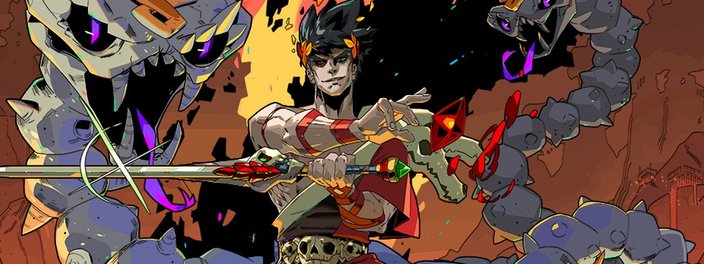
In the realm of horror survival games, where every shadow holds a potential threat and every corner hides unspeakable horrors, one mechanic stands out as the ultimate test of skill and nerve: permadeath. This unforgiving attribute, which permanently ends your character’s life upon death, has become a staple in the genre, adding a layer of tension and consequence that few other elements can match. But why is permadeath so effective in horror games? What makes it so appealing to players who crave the ultimate challenge? And how are developers innovating with this mechanic to create even more terrifying and immersive experiences? Let’s delve into the world of permadeath in horror survival games, exploring its allure, its impact on gameplay, and its future in the genre. We’ll examine how permadeath amplifies the fear factor, forcing players to make strategic decisions and confront their own mortality. We’ll also explore how it’s being integrated into multiplayer experiences, creating shared nightmares and fostering teamwork. Furthermore, we’ll discuss the function of early access in shaping the development of permadeath games, allowing developers to fine-tune the difficulty and balance the gameplay based on player feedback. Finally, we’ll look at some of the latest trends in permadeath design, including ‘soft’ permadeath mechanics, roguelike elements, and narrative-driven consequences. Get ready to face your fears and embrace the ultimate challenge. The world of permadeath awaits, and only the most skilled and courageous will survive.
The Allure of Finality: Why Permadeath Works in Horror. Permadeath, short for ‘permanent death,’ is a game mechanic where a player character’s death is irreversible. No respawns, no continues, just game over. This idea might seem harsh, especially in a genre already designed to instill fear and anxiety. However, it’s precisely this finality that makes permadeath such a compelling addition to horror survival games. The core of horror lies in vulnerability. By removing the safety net of respawns, permadeath amplifies this vulnerability, making every encounter with a monster or treacherous environment a high-stakes gamble. Suddenly, that creaking door or shadowy figure isn’t just a jump scare; it’s a potential end to your entire playthrough. This heightened sense of risk transforms the way players approach the game. Caution becomes paramount, resource management crucial, and every decision carries significant weight. The fear of losing progress becomes a powerful motivator, driving players to think strategically and act decisively. Moreover, permadeath enhances the narrative impact of the game. When death is permanent, the player’s story becomes unique and personal. Each playthrough is a distinct tale of survival, marked by triumphs, failures, and close calls. This creates a stronger emotional connection to the character and the world, making the experience far more memorable than a typical run-through with unlimited lives. The knowledge that any mistake could be your last adds a layer of tension and excitement that few other game mechanics can replicate. It’s a constant reminder that in the world of horror, death is not just a setback; it’s the ultimate consequence.
Multiplayer Mayhem and Permadeath: A Shared Nightmare. While permadeath is often associated with single-player experiences, its integration into multiplayer horror games offers a unique and terrifying dynamic. Imagine facing hordes of zombies or navigating a haunted mansion with your friends, knowing that one wrong move could spell permanent doom for any of you. This shared risk creates a powerful sense of camaraderie and tension. Players must rely on each other for support, strategizing and coordinating their actions to survive. The stakes are even higher when permadeath applies to the entire group. If one player falls, the entire team might suffer the consequences, leading to intense moments of pressure and difficult decisions. Do you risk your own life to save a teammate, or do you prioritize your own survival? These moral dilemmas add another layer of complexity to the gameplay, forcing players to confront their own values in the face of imminent danger. Of course, implementing permadeath in multiplayer games requires careful balancing. It’s crucial to ensure that the experience remains fair and enjoyable, even when players are eliminated. Some games offer limited respawns or allow players to be revived by their teammates, providing a safety net without completely negating the impact of permadeath. Others introduce mechanics that allow dead players to influence the game in some way, perhaps by haunting the remaining survivors or providing them with clues. Regardless of the specific implementation, permadeath in multiplayer horror games creates a uniquely intense and unforgettable experience. It fosters teamwork, encourages strategic thinking, and amplifies the fear factor, making every playthrough a thrilling and unpredictable adventure.
Early Access and Permadeath: Shaping the Future of Fear. The rise of early access has had a significant impact on the development of horror games, particularly those incorporating permadeath. Early access allows developers to release their games in an unfinished state, gathering feedback from players and iterating on their designs based on community input. This collaborative approach is particularly valuable for permadeath games, as it allows developers to fine-tune the difficulty, balance the gameplay, and ensure that the permadeath mechanic feels fair and rewarding. Players can offer valuable insights into what works and what doesn’t, helping developers to create a more polished and engaging experience. For example, players might suggest tweaks to the enemy AI, adjustments to the resource scarcity, or improvements to the user interface. This feedback can be crucial in ensuring that the permadeath mechanic feels challenging but not frustrating. Moreover, early access allows developers to experiment with varied approaches to permadeath, testing out various implementations and seeing how players respond. Some games might offer multiple difficulty levels, each with its own permadeath rules. Others might introduce optional permadeath modes, allowing players to select whether or not to embrace the ultimate challenge. This flexibility is essential in catering to a wide scope of players, from hardcore survivalists to more casual gamers. As early access continues to evolve, it’s likely that we’ll see even more innovative and creative uses of permadeath in horror games. By working closely with their communities, developers can create experiences that are both terrifying and rewarding, pushing the boundaries of the genre and redefining what it means to be truly afraid.
Horror Game attributes & Trends: The Evolution of Permadeath. Permadeath is not a new idea in gaming, but its application in horror survival games has evolved significantly over time. Early implementations were often unforgiving and punishing, with little room for error. However, modern horror games are taking a more nuanced approach, incorporating permadeath in ways that enhance the experience without feeling unfair. One trend is the introduction of ‘soft’ permadeath mechanics. These systems might not completely wipe your progress, but they impose significant penalties for dying, such as losing valuable items or being forced to restart from an earlier checkpoint. This offers a sense of consequence without the crushing disappointment of a complete game over. Another trend is the integration of permadeath with roguelike elements. Roguelike games are characterized by procedurally generated levels, randomized loot, and permadeath. By combining these elements with horror themes, developers can create experiences that are both unpredictable and terrifying. Each playthrough is unique, with varied challenges and opportunities, ensuring that players are always on their toes. Furthermore, some games are experimenting with narrative-driven permadeath. In these games, death is not just a game over; it’s a part of the story. The player’s choices and actions have lasting consequences, shaping the narrative in meaningful ways. This can create a more immersive and emotionally resonant experience, as players become deeply invested in the fate of their characters. As technology advances and game design evolves, it’s likely that we’ll see even more innovative and creative uses of permadeath in horror games. Developers are constantly finding new ways to challenge and terrify us, and permadeath will undoubtedly remain a key tool in their arsenal.
Multiplayer Access Options: How to Die (Permanently) with Friends. The way multiplayer access is handled in permadeath horror games can significantly impact the overall experience. Some games offer seamless drop-in/drop-out multiplayer, allowing players to join or leave a game at any time. This can be a great way to play with friends, but it can also lead to unpredictable situations, especially if players are not on the same skill level. Other games require players to form a party before starting a game, ensuring that everyone is committed to the same objective. This can foster a stronger sense of teamwork and cooperation, but it can also be more difficult to coordinate schedules. Another crucial consideration is the way player death is handled in multiplayer. Some games allow dead players to spectate the remaining survivors, providing them with valuable information and support. Others remove dead players from the game entirely, forcing them to wait until the next playthrough. The choice of approach can have a significant impact on the overall dynamic of the game. For example, allowing dead players to spectate can create a sense of tension and suspense, as they watch their friends struggle to survive. However, it can also lead to backseat gaming and unwanted advice. Ultimately, the optimal approach depends on the specific design of the game and the preferences of the players. Some games might even offer multiple multiplayer modes, each with its own rules and access options. This allows players to select the experience that optimal suits their needs and preferences. As multiplayer gaming continues to evolve, it’s likely that we’ll see even more innovative and creative ways to access and experience permadeath horror games with friends. The possibilities are endless, and the future of fear is brighter than ever.
Permadeath, while not for the faint of heart, adds a layer of depth and consequence to horror survival games that few other attributes can match. It forces players to engage with the game on a deeper level, making every decision matter and every encounter a potential turning point. As developers continue to explore new ways to terrify and challenge us, permadeath will likely remain a staple for those seeking the ultimate test of skill and nerve. Whether you’re a seasoned survivalist or a newcomer to the genre, embracing permadeath can unlock a whole new level of immersion and excitement in your favorite horror games. So, are you brave enough to face the ultimate consequence? The choice, as always, is yours.
